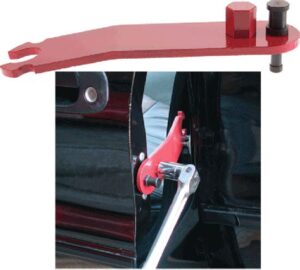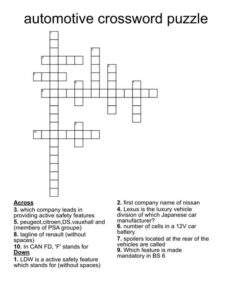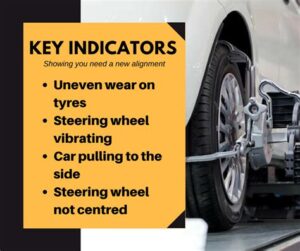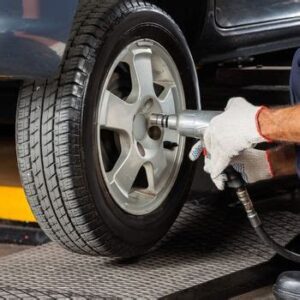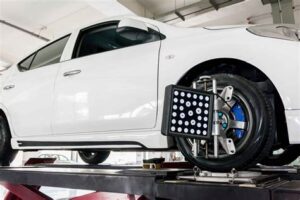Discover wheel alignment essentials, including factors affecting alignment time, average duration, importance of timely service, and tips for a faster experience.When it comes to maintaining your vehicle, ensuring proper wheel alignment is crucial for optimal performance and safety on the road. But how long does it actually take to get a car aligned? In this blog post, we’ll explore the ins and outs of wheel alignment, starting with what it actually entails. We’ll delve into the various factors that can influence the time it takes to complete the alignment process, as well as the average duration you can expect. Understanding the importance of timely wheel alignments will help you appreciate why this service shouldn’t be overlooked. To wrap up, we’ll provide you with some tips to expedite your alignment service, ensuring you’ll be back on the road swiftly and safely. Whether you’re a vehicle novice or a seasoned car enthusiast, this guide will equip you with essential knowledge about wheel alignment.
What is wheel alignment?
Wheel alignment refers to the adjustment of a vehicle’s suspension system. This involves aligning the angles of the wheels to the manufacturer’s specifications to ensure optimal performance and safety. Proper alignment is crucial as it helps maintain the correct position of the tires on the road, enhancing both comfort and drivability.
When wheel alignment is performed, three primary angles are adjusted: camber, caster, and toe. The camber angle measures how tilted the tires are when viewed from the front; the caster angle pertains to the angle of the steering axis when viewed from the side; and the toe angle indicates whether the tires are pointed inward or outward.
Misalignment may occur due to several factors, such as hitting potholes, curbing, or general wear and tear. If not addressed, it can lead to uneven tire wear and can negatively impact your vehicle’s handling characteristics. Therefore, understanding wheel alignment is essential for ensuring the longevity and safety of your vehicle.
Factors affecting alignment time
When it comes to getting your car’s wheel alignment done, several factors can impact the time it takes to complete the service. Understanding these variables can help you set realistic expectations and plan your day accordingly.
One of the primary factors affecting alignment time is the condition of the suspension system. If the system is in good shape and all components are functioning well, the alignment process can be relatively quick. However, if there are issues such as worn-out parts or necessary repairs, the technician may need more time to address these problems before performing the alignment.
Another significant factor is the type of alignment being performed. There are generally two types: front-end alignment and four-wheel alignment. While a front-end alignment typically takes less time, a four-wheel alignment can require more adjustments and thus may take longer to complete. Additionally, the technician’s experience and the equipment used can also play a crucial role in how quickly the alignment service is completed.
In some cases, the make and model of your vehicle can affect how long the alignment takes. Certain vehicles may have more complex systems requiring specialized techniques, which can extend the service time. Overall, being aware of these factors can help you better understand the timeline for your car’s wheel alignment.
Average time for a car alignment
Understanding how long it takes for a car to get aligned is essential for vehicle owners. On average, the wheel alignment process typically takes about 1 to 2 hours. However, this time may vary based on several factors, such as the specific service being performed and the condition of the vehicle.
During a standard alignment service, technicians will assess the toe, camber, and caster angles to ensure they match the manufacturer’s specifications. The time can be extended if additional issues are identified or if other related services, such as suspension repairs, are necessary. High-performance vehicles or vehicles with significant modifications may also require more meticulous alignment work, which can further increase the duration.
It’s always a good idea for car owners to schedule an alignment service in advance and allow for some flexibility in their schedule. This can ensure that they do not feel rushed and can have a thorough check on their vehicle’s alignment needs. Understanding the average time for a car alignment will help you plan accordingly and maintain your vehicle in the best condition possible.
Importance of timely wheel alignment
Timely wheel alignment is crucial for maintaining the overall health of your vehicle. When wheels are properly aligned, it ensures that your car drives straight and reduces tire wear. Over time, misalignment can lead to uneven tire wear, which means you’ll need to replace your tires sooner than expected.
Furthermore, aligned wheels contribute significantly to vehicle safety. When your wheels are not aligned, it can cause the car to pull to one side, making it difficult to control. This situation can lead to potentially dangerous driving conditions, especially at high speeds or in adverse weather.
In addition to safety and tire longevity, performing wheel alignments on a regular basis can improve your vehicle’s fuel efficiency. Misaligned wheels can cause increased rolling resistance, which can lead to higher fuel consumption. Therefore, timely wheel alignments not only ensure safety but also save you money in the long run.
Tips for faster alignment service
Getting a car aligned is crucial for optimal performance, but many drivers wish to streamline the process. Here are some tips to ensure a faster alignment service:
- Schedule an Appointment: Call ahead or book online to reserve a time for your alignment service. This reduces wait times.
- Arrive Prepared: Ensure that your vehicle is free of any obstructions and all required documentation is ready, such as maintenance records.
- Choose the Right Time: Visit the service shop during non-peak hours. Early mornings or weekdays can be less crowded.
- Communicate Clearly: Inform the technician of any symptoms you’ve noticed, like uneven tire wear or pulling to one side, to expedite the diagnosis.
- Inspect Tires Regularly: Keeping your tires in good condition can help minimize the time needed for alignment.
Additionally, consider investing in a pre-alignment inspection. This inspection can help catch any underlying issues, leading to a faster alignment process, as it can reduce the potential for unexpected repairs during the alignment.
Lastly, staying informed about your vehicle’s maintenance schedule can contribute to efficient service. Regular checks can prevent problems that might delay your alignment and ensu
Frequently Asked Questions
What is a wheel alignment?
A wheel alignment is the adjustment of a vehicle’s suspension system to ensure that the wheels are set to the manufacturer’s specifications, which helps in improving tire wear and vehicle handling.
How long does a typical wheel alignment take?
A typical wheel alignment service usually takes about 1 to 2 hours, depending on the vehicle and the shop’s workload.
What factors can affect the duration of a wheel alignment?
Factors that can affect the duration include the condition of the suspension components, the type of alignment being performed (front-end or four-wheel), and whether any adjustments or repairs are needed.
How often should I get my wheels aligned?
It is recommended to have your wheels aligned every 6,000 miles, or when you notice signs of misalignment such as uneven tire wear, pulling to one side, or if you’ve hit a significant pothole.
Can I drive my car immediately after an alignment?
Yes, you can generally drive your vehicle immediately after an alignment, as it doesn’t require a cooldown period or any waiting before driving.
What are the signs my car may need an alignment?
Signs that your car may need an alignment include uneven tire wear, steering wheel vibrations, the vehicle pulling to one side, and a crooked steering wheel when driving straight.
Is a wheel alignment necessary after rotating the tires?
While a wheel alignment is not always necessary after a tire rotation, it is a good idea to check alignment as part of regular maintenance, especially if you notice any handling issues.

